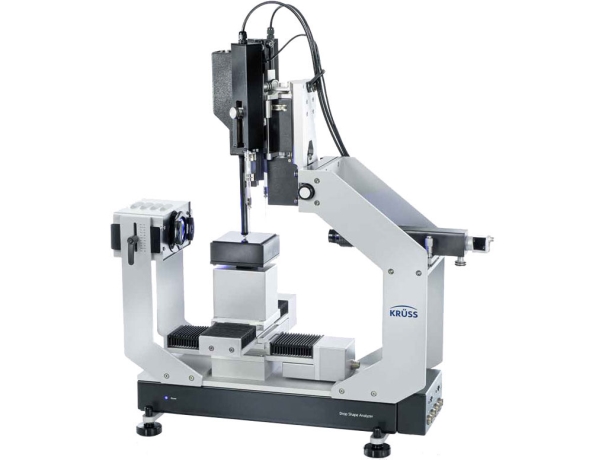Drop shape analysis is a scientific technique used to study the wettability and surface properties of solid materials by measuring the shape and contact angle of liquid droplets on their surfaces. This analysis is particularly important in various fields, including materials science, chemistry, biology, and engineering, as it provides insights into how liquids interact with solid surfaces.
Uses of Drop shape analysis
Drop shape analysis is a versatile technique with numerous practical applications across various fields. Here are some of the key uses of drop shape analysis:
Surface Characterization: It is used to characterize and assess the surface properties of materials, including wettability, roughness, and surface energy. This information is crucial for material selection and optimization.
Quality Control in Manufacturing: Drop shape analysis is employed in quality control processes to ensure that surfaces are coated or treated correctly. It helps manufacturers maintain consistent product quality.
Biomedical Applications: In the medical field, it is used to study the interaction between biological fluids and medical devices or implants. This information aids in the design of biocompatible materials.
Pharmaceuticals: Drop shape analysis is utilized to study the wetting behavior of pharmaceutical powders and tablets. It can help optimize drug formulation and improve drug delivery.
Adhesion and Adhesives: It is used to evaluate the adhesive properties of materials and assess the effectiveness of adhesives, which is crucial in industries like automotive, aerospace, and construction.
Oil and Gas: In the oil and gas industry, drop shape analysis helps understand how liquids, such as crude oil, interact with various surfaces, including pipelines and drilling equipment.
Environmental Science: Researchers use drop shape analysis to investigate how liquids interact with natural surfaces, such as leaves, soil, and rocks. This information is vital for understanding hydrophobic and hydrophilic properties in environmental contexts.
Microfluidics: In microfluidic devices, drop shape analysis helps design and optimize channels and surfaces to control the movement and behavior of small volumes of liquids.
Chemical Engineering: It plays a role in the design and optimization of chemical processes, particularly in understanding how liquids interact with reactor vessel surfaces.
Material Science: Researchers use this technique to study the wetting behavior of liquids on various materials, aiding in the development of new materials with specific surface properties.
Textiles: In the textile industry, drop shape analysis helps assess the effectiveness of fabric coatings for water repellency or moisture-wicking properties.
Food and Beverage Industry: It is used to study how liquids interact with food packaging materials, ensuring that packaging is effective in preserving food quality and safety.
Electronics: Drop shape analysis helps assess the wetting behavior of soldering materials, which is crucial in electronics manufacturing.
Cosmetics: In the cosmetic industry, it aids in the formulation and testing of cosmetics, ensuring they adhere well to the skin or other surfaces.
Agriculture: Researchers use this technique to understand how pesticides or fertilizers spread on plant surfaces, optimizing their effectiveness.
WHAT IS Surface Analyzer
A Surface Analyzer is a scientific instrument or device used to examine and analyze the properties of a material's surface. It is a tool commonly used in various fields such as materials science, chemistry, physics, and engineering to gather information about the topmost layer of a substance, including its composition, roughness, topography, chemical bonding, and other surface characteristics.
Surface analyzers come in various forms and can use different techniques to gather data.
